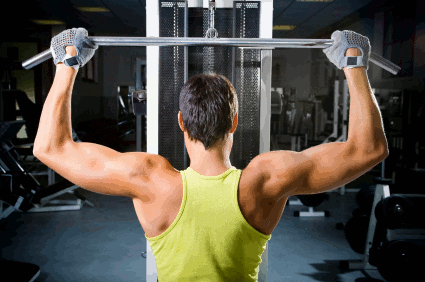 Physical Chess. Many people use the “physical chess” metaphor when they are asked to describe fencing.
Physical Chess. Many people use the “physical chess” metaphor when they are asked to describe fencing.
This comparison, while apt, often tricks us into overemphasizing the “chess” half of the analogy while skipping out on the “physical.” Fencing is a mental game. It demands focus, strategy, tactical execution, and incredible forethought. However, fencing is also a sport that requires power, flexibility, and speed.
Professional athletes spend a great deal of time training. Top-level fencers are no exception. Tim Morehouse distributed a series of blog posts illustrating his training regimen – specifically non-fencing exercises, stretches, and weight training. For some reason, this level of dedication hasn’t trickled down to the rank and file. Certainly, individual athletes run religiously, lift weights as part of a regular program, or inflict any number of strange exercise routines upon themselves. Still, there a number of fencers and coaches who overlook the impact that a structured exercise routine can have on their fencing development.
Fitness Training
Core fitness training impacts an athlete in a variety of ways. Lifting weights makes you stronger. Sprinting and jumping exercises increase your speed. Distance running improves your endurance. Certain stretches enhance your flexibility. All of these can have a positive impact on one’s fencing performance. Physical training also strengthens your ability to perform in unusual situations. I’d be inclined to think that most of us don’t “practice” a John Tiomkin jump flick – but having the muscles to do it in a high pressure situation certainly can’t hurt!
Recovery Time and Injury Prevention
Training significantly impacts your recovery time. Being able to train longer and get back into training sooner is a huge benefit to any dedicated fencer. Many studies have shown that by varying an exercise routine, impacting different muscle groups, you greatly increase the amount of time you can spend training. This allows you to still work on things like cardiovascular fitness and endurance, while getting a sympathetic workout on muscles you are allowing to “rest.” This methodology can also teach your muscles to recuperate faster, and help prevent potential injury when an unusual situation forces you to use muscles not frequently exercised.
Cross Training
Cross training is another area of potential gain. There are areas of development that are rarely impacted by fencing practice. Muscle groups don’t get worked, and while reflexes and hand-eye coordination are bound to improve, they frequently become linked to specific stimuli.
Cross-training, even simply playing other sports like soccer or basketball, helps you become more aware of your body’s strengths, weaknesses, and capabilities. In renowned foilist Sergei Golubitsky’s book, Fencing Is My Life, he described dozens of camps he attended during the peak of his international career. Virtually every camp included some form of cross training – in his case, usually playing soccer.
There are a number of clubs that adhere heavily to fitness training besides their normal practice routines. Northwest Fencing Center, for example, outsources their physical conditioning work to another facility that specializes in fitness training.
Mariel Zagunis, two time Olympic Gold Medalist, spoke before the Beijing Olympics on the importance of cross-training: “I think that the old philosophy that the best training for fencing is fencing is not a very smart one. Because anyone who observes fencing or is a fencer themselves, knows how imbalanced that it makes your body. And so I think that cross training, especially when you’re at the high level, is very important to help prevent injuries.”
There are many different options, but the one thing they all agree on is this : Physical training works.




